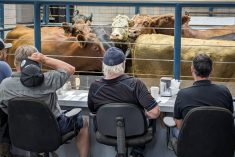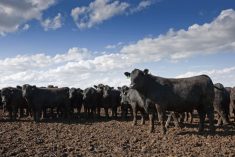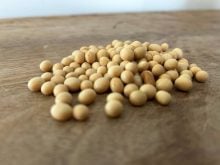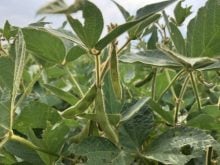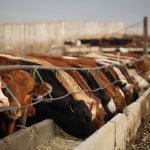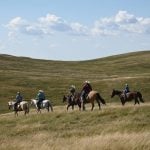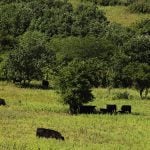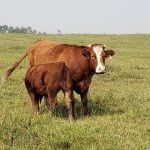Compared to last week, Western Canadian yearling markets traded $3 to $4 on either side of unchanged.
Calf markets appeared to trade $2 to $3 above week-ago levels on average. Feedlot margins on current pen close-outs are negative $300 to $350 per head but replacement markets haven’t missed a beat. Finishing feedlots were once again bidding aggressively on backgrounded cattle with fleshier types experiencing limited slippage. Larger pen sized groups were on the higher end of the priced spectrum with buyers avoiding smaller packages.
There may have been a small premium on Limousin or larger carcass cattle with Ontario orders stretching into Central Alberta. Yearlings and backgrounded cattle dominated Alberta sales while calf numbers were more prevalent in Manitoba. Alberta feedlots are backed-up with market ready supplies, while Ontario feedlots are fairly current. Therefore, Alberta operations were a bit more aggressive on replacements under 700 pounds.
Read Also

Prairie CWRS bids rise, other wheats mixed
Canada Western Red Spring (CWRS) wheat bids across the Prairie provinces saw some strength during the week ended Nov. 11, taking some direction from the United States futures. However, other wheat classes were mixed.
U.S. feeder markets were slightly higher last week; however, U.S. demand has been limited with colder temperatures also noted in the Midwest.
In Central Alberta, a larger group of Charolais mixed steers weighing just under 1,000 pounds on light grain and silage diet with full health data sold for $284. In the same region, mixed larger frame tan heifers averaging 910 pounds on light grain and forage diet with full processing data sold for $267. Near Lethbridge, red, mixed, medium flesh steers averaging 903 pounds dropped the gavel at $290. In Central Saskatchewan, Angus based medium flesh heifers weighing 850 pounds apparently sold for $275.
Northwest of Winnipeg, a smaller group of red mixed, fleshier steers weighing 720 pounds were reported as trading for $330. In the same region, a smaller group of Simmental based heifers on the card at 745 pounds reportedly left the ring at $291. In the Red Deer region, Angus blended weaned steers averaging 650 pounds with full health data on hay and forage diet were valued at $377. Southeast of Saskatoon, medium frame, short-weaned, mixed black and red heifers averaging just over 600 pounds notched the chart at $322.
In Central Alberta, a larger group of black weaned steers weighing 560 pounds supposedly traded for $390. North of Brandon, a larger group of red mixed heifers weighing 543 pounds were quoted at $351. In Lloydminster, black steers weighing 517 pounds were quoted at $401.
The USDA Cattle on Feed Report had total on feed numbers as of January 1 were up two per cent from last year; however, placements during December were down four per cent from 12 months earlier. We’re also seeing lower placements in Western Canada over the past couple of months. The nearby fed cattle situation is burdensome but supplies will tighten in the summer period. This is underpinning the lighter weight categories.
— Jerry Klassen is president and founder of Resilient Capital, specializing in proprietary commodity futures trading and market analysis. Jerry consults with feedlots on risk management and writes a weekly cattle market commentary. He can be reached at 204-504-8339 or via his website at ResilCapital.com.






